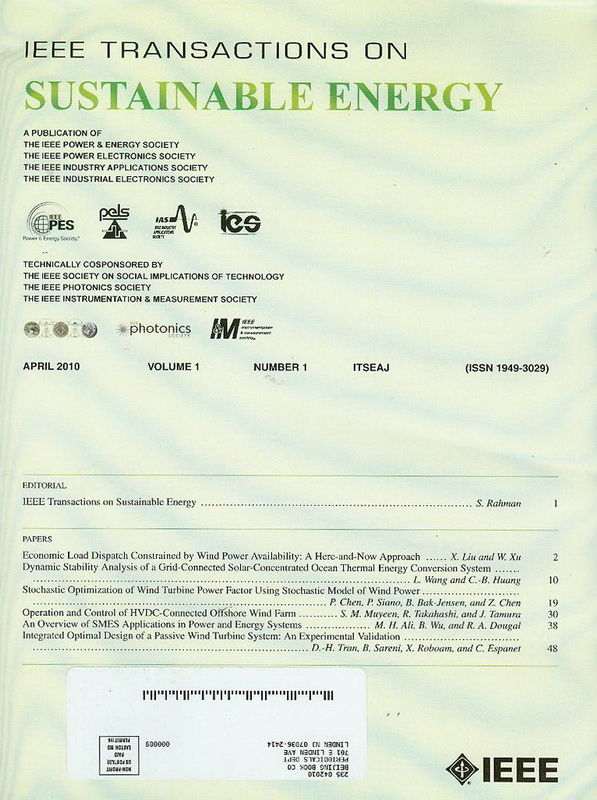Pitch Control Scheme Considering Entire Dynamics and Full-Load Region in PMSG-Based Wind Turbines
IF 8.6
1区 工程技术
Q1 ENERGY & FUELS
引用次数: 0
Abstract
Large-scale wind turbines (WTs) are built with light-strength materials, which would otherwise cost more than the economic benefits of power generation. Hence, these turbines with huge rotors and slender towers are more exposed to external forces such as gust winds and the wake effect during their operational lifetime. This paper strives to establish a bridge between the design principles of the pitch control system (PCS) and the inherent dynamics of the drivetrain, blades, and tower in a grid-tied 5MW PMSG-based WT. Based on this purpose, the dynamic representation of the PCS is described in more detail, then the pitch controller is designed based on the complete dynamic model of the WT using a gain-scheduled PI controller to be capable of providing desirable dynamical performance throughout the pitch actuation region. The parameters of the proposed controller are calculated according to the current operating point of the WT with the aim of ensuring the acceptable stability margin and reducing the WT loading as much as possible. The controller design process is accomplished by analyzing the linearized dynamic model of the PCS under various scenarios using responses resulting from the frequency domain, polar coordinate, and modal analysis. Finally, nonlinear simulations illustrate that the intended pitch controller has a superior response over the traditional PI controllers.大型风力涡轮机(WTs)采用轻质材料建造,否则其成本将高于发电的经济效益。因此,这些拥有巨大转子和纤细塔架的涡轮机在其运行寿命期间更容易受到阵风和尾流效应等外力的影响。本文试图在变桨控制系统(PCS)的设计原理与基于 PMSG 的并网 5MW 风力发电机的传动系统、叶片和塔架的固有动力学之间架起一座桥梁。基于这一目的,我们更详细地描述了变桨控制系统的动态表示,然后根据风电机组的完整动态模型,使用增益调度 PI 控制器设计了变桨控制器,使其能够在整个变桨驱动区域提供理想的动态性能。拟议控制器的参数根据风电机组当前的工作点进行计算,目的是确保可接受的稳定裕度,并尽可能减少风电机组的负载。控制器的设计过程是通过使用频域、极坐标和模态分析产生的响应,分析 PCS 在各种情况下的线性化动态模型来完成的。最后,非线性模拟结果表明,与传统的 PI 控制器相比,预定的变桨控制器具有更优越的响应性能。
本文章由计算机程序翻译,如有差异,请以英文原文为准。
求助全文
约1分钟内获得全文
求助全文
来源期刊

IEEE Transactions on Sustainable Energy
ENERGY & FUELS-ENGINEERING, ELECTRICAL & ELECTRONIC
CiteScore
21.40
自引率
5.70%
发文量
215
审稿时长
5 months
期刊介绍:
The IEEE Transactions on Sustainable Energy serves as a pivotal platform for sharing groundbreaking research findings on sustainable energy systems, with a focus on their seamless integration into power transmission and/or distribution grids. The journal showcases original research spanning the design, implementation, grid-integration, and control of sustainable energy technologies and systems. Additionally, the Transactions warmly welcomes manuscripts addressing the design, implementation, and evaluation of power systems influenced by sustainable energy systems and devices.
 求助内容:
求助内容: 应助结果提醒方式:
应助结果提醒方式:


